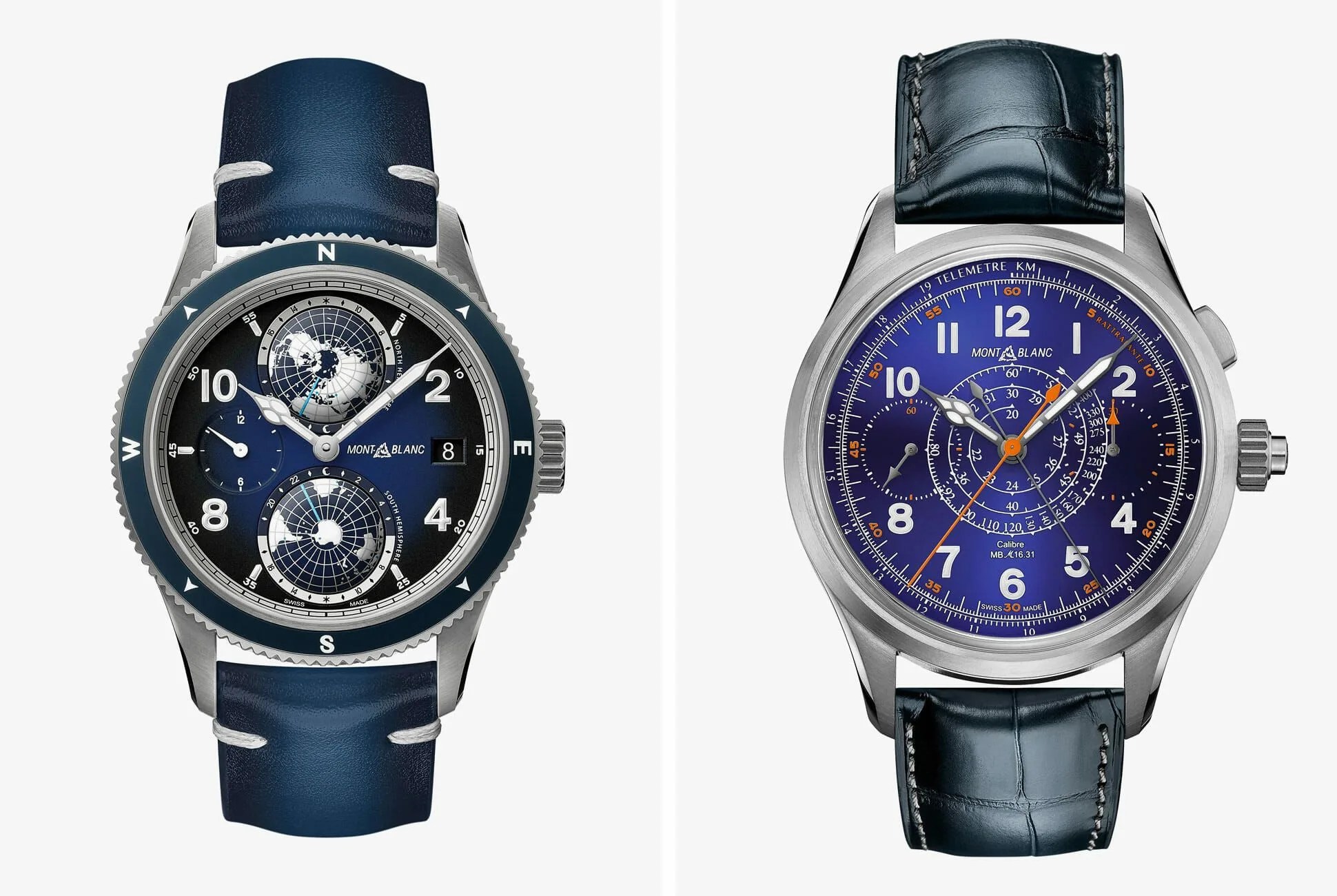Editor’s Note: Watches & Wonders (formerly SIHH) and Baselworld 2020 are canceled but that hasn’t stopped watch brands large and small from debuting their new wares. To stay on top of this year’s best new watch releases, visit our tag page.
Montblanc has given two models in its 1858 collection the blues. They leverage the historic Minerva factory, now owned by Montblanc, for the aesthetics of its early- to mid-20th century watches, as well as its modern production capacity. Now with striking blue dials, the Geosphere world time watch and the high-end Split Second Chronograph each also get a new skin in the form of Grade 5 titanium cases.
Both watches feature in-house movements, with the Geosphere representing a much lower price point and a pretty strong value considering the watch’s unique complication: For $5,800, this 42mm-wide world timer displays the time in both hemispheres as represented by domed globe motifs — each turning opposite directions on the dial. Other elements like a 24-hour hand at 9 o’clock and rotating bezel all come together to offer plenty of useful information presented in an exceedingly elegant way. The dial, including the continents, is amply lumed and glows for a striking effect in low light.
For those who enjoy high-level craftsmanship and can afford five-figure watches, there’s the 1858 Split Second Chronograph, now with a gorgeous orange-accented, deep blue dial. (At $36,000, the rest of us can only appreciate this iteration of the Split Second from afar.) Not only is its styling based on Minerva heritage, but its complicated movement is extensively finished and based on a Minerva movement from the 1930s. Its dial is crafted from solid gold and treated with grand feu enamel to achieve the blue effect.
The distinctive dial features a tachymeter, which is the most common scale found on chronograph watches and is used for measuring speed based on time traveled — but here, it’s in an uncommon spiral shape in the center of the dial. More functionality is provided by a telemeter scale on the dial’s periphery, which, conversely, is often found in early 20th-century watches in an inner spiral-shaped scale. This scale was often historically used for measuring distances to objects or events and was employed for artillery spotting, for example.
Chronographs are complicated to begin with, but this one is even more exotic: as both a monopusher as well as a split-second chronograph, it utilizes a movement that is difficult to design and manufacture, and costs a pretty penny to produce. In titanium at 44mm wide, this somewhat esoteric watch is meant for collectors.

